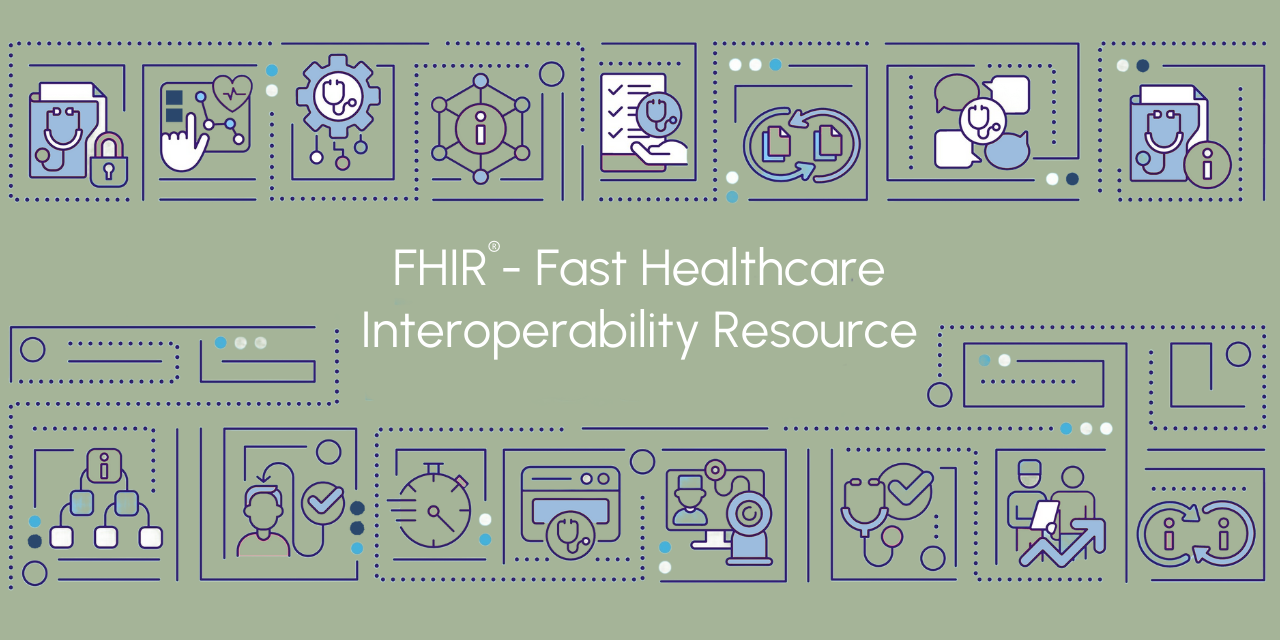Traditionally, prior authorization has been a complex, time-consuming process fraught with inefficiencies. Disconnected systems and manual procedures not only slow down care but can also lead to significant administrative errors. These challenges have long plagued healthcare payers, providers, and members, creating barriers to timely and effective care.
The process involves multiple steps which can be prone to delays and mistakes, including:
- Eligibility verification – benefit coverage and exclusion
- Clinical documentation support
- Manual reviews for medical necessity
These inefficiencies not only strain healthcare resources but also frustrate members who are left waiting for necessary treatments. A more streamlined, efficient approach is needed to transform this critical aspect of healthcare administration. Enter FHIR® – Fast Healthcare Interoperability Resources.
What is FHIR® and How Does it Work?
Developed by HL7, FHIR® aims to simplify healthcare data exchange, making it universally interoperable. At its core, FHIR® is a standardized language for exchanging healthcare data. It acts as a common ground, enabling seamless communication between disparate healthcare information systems used by providers, payers, and members.
FHIR® achieves this through a set of modular components, or “resources,” that represent various aspects of healthcare data. These resources can be easily shared and understood across different platforms, eliminating the need for redundant data entry and reducing the risk of errors.
The Power of FHIR® in Prior Authorization
By adopting FHIR® standards, healthcare organizations achieve several key benefits:
- Automation: One of the most significant benefits of FHIR® is its ability to facilitate automation in the prior authorization process. Automation can handle many of the repetitive and manual tasks traditionally associated with prior authorization, such as eligibility checks and status updates. This not only speeds up the process but also reduces the potential for human error.
- Real-time Data Exchange: FHIR® facilitates the exchange of data in real-time. This means crucial information about a member’s eligibility, medical history, and treatment plan is readily available at the point of care, allowing for faster and more informed prior authorization decisions.
- Reduced Errors: Manual data entry is a significant source of errors in the prior authorization process. FHIR® automates much of this process, minimizing the risk of human error and ensuring data accuracy.
- Enhanced Transparency and Communication: FHIR® fosters clear and direct communication channels between providers, payers, and members. All parties involved have access to the latest information on the authorization status, promoting transparency and trust throughout the process.
- Significant Cost Savings: Healthcare payers can expect significant cost savings due to reduced administrative burden and streamlined operations. Providers can dedicate more time to delivering quality care, and members experience less stress and delays in receiving necessary treatment.
CMS Final Rule: A Catalyst for Change
The CMS Interoperability and Prior Authorization Final Rule (CMS-0057-F) further underscores the importance of FHIR® and sets a clear timeline for implementation. This rule marks a transformative phase for U.S. healthcare payers, emphasizing the need for seamless data exchange and interoperability.
Here’s a breakdown of key points:
- Effective January 1, 2026: This initial phase focuses on non-API requirements, laying the groundwork for a more standardized approach to prior authorization.
- Focus on Interoperability: The rule emphasizes the use of standardized formats like FHIR® to ensure seamless data exchange between healthcare entities.
- Future Advancements with APIs: By January 1, 2027, payers will need to implement specific application programming interfaces (APIs) like HL7® and FHIR®. These APIs will enable a more streamlined electronic exchange of healthcare data, further enhancing the efficiency and accuracy of the prior authorization process.
This regulatory push towards interoperability and the adoption of FHIR® standards is expected to revolutionize the healthcare industry. As healthcare payers and providers prepare for these changes, the focus will be on developing and implementing systems that can handle real-time data exchange, automate repetitive tasks, and ensure accurate and timely prior authorization decisions.
The Future of Prior Authorization with FHIR®
As healthcare continues to evolve, the need for efficient and interoperable systems becomes increasingly critical. FHIR® represents a significant step forward in addressing the challenges of prior authorization. By standardizing and automating the process, FHIR® not only improves efficiency but also enhances the quality of care and the member experience.
The future of prior authorization lies in the widespread adoption of standards like FHIR®. As more healthcare organizations embrace this technology, we can expect to see a significant reduction in the administrative burdens associated with prior authorization. This will allow healthcare providers to focus more on member care and less on paperwork, ultimately leading to better health outcomes.
At HealthAxis, we believe in the power of technology to transform healthcare. Our FHIR®-enabled CAPS platform AxisCore™ streamlines prior authorization, improves data interoperability, and enhances member care. By adopting and promoting FHIR® standards, we aim to lead the industry toward a more connected, efficient, and member-centric future.
Schedule a discovery call today to learn how our AxisCore™ platform can revolutionize your prior authorization processes and elevate your organization’s performance.
Author:

Chris House
Chief Technology Officer
HealthAxis






